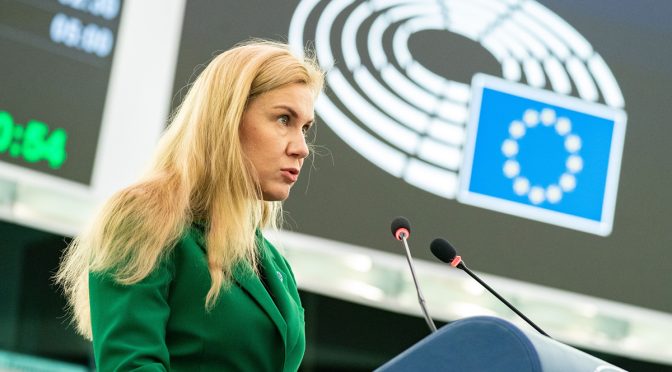Today is the second anniversary of REPowerEU, the EU’s energy policy response to Russia’s invasion of Ukraine. REPowerEU has speeded up the permitting of wind farms and helped raise the share of wind in Europe’s electricity mix – it’s now 19%. The EU have now launched new initiatives to keep the momentum of REPowerEU by further accelerating the build-out of renewables.
When the European Commission launched REPowerEU two years ago, Russia was threatening Europe’s energy security and economic competitiveness. The cuts to Russian gas imports quickly turned into one of the most severe energy crises in Europe’s history.
REPowerEU had three main goals: to save energy, to diversify gas imports and to ramp up the production of domestic renewables.
“REPowerEU was a milestone in European energy policy. After Russia invaded Ukraine the EU could have easily put the Green Deal on hold. But they did the opposite. They doubled down on renewables. And the results have proven them right. REPowerEU has been a decisive kick-start for Europe’s transition to local, clean and cheap electricity”, says WindEurope CEO Giles Dickson.
The effects of REPowerEU

The effects of REPowerEU are striking. In just two years:
- the share of wind in the EU electricity mix has risen from 14% to 19%;
- annual wind energy production has risen from 375 TWh to 466 TWh;
- wind now means 95bcm less need for gas every year; and 119m tonnes of avoided CO2.
Europe’s wind industry now contributes €52bn to EU GDP and employs more than 300,000 people. And this will continue to grow as the EU wants wind to be 35% of the in the electricity mix in 2030 and over half by 2050.
Read our REPowerEU infographic which shows what wind energy is delivering today compared to two years ago.
New initiatives to keep the momentum of REPowerEU
On this two-year anniversary of REPowerEU the EU Commission has launched new initiatives to further accelerate the deployment of wind energy:
- Guidance and recommendations on renewable auction design;
- Guidance and recommendations on renewable energy permitting;
- Guidance on the designation of renewable acceleration areas; and
- A digital platform on auction planning.
On auction design the Commission have clarified that non-price criteria should be technology-specific. That pre-qualification criteria should include cybersecurity and responsible business conduct, and that other criteria such as “innovation” should be used as award criteria. And that supply chain resilience criteria should be applied as soon as possible to strengthen Europe’s clean tech manufacturing.
“Europe’s moving away from wind auctions based solely on price. Good. Non-price award criteria reward those projects that bring the biggest value to consumers and society. And tighter pre-qualification criteria help raise the bar on what sort of turbines get built”, says WindEurope CEO Giles Dickson.
The Commission have also told Member States that proper indexation of auction prices and penalties for non-completion of projects are crucial for successful auctions. But the Commission have missed a trick by not telling Member States to limit negative bidding. Negative bids add costs which have to be passed on to consumers and the supply chain.
On permitting the Commission have spelled out how Member States should apply the new Renewable Energy Directive to simplify rules and procedures. They’ve got to set up one-stop shops and completely digitalise their permitting procedures by November 2025. And they should have a single contact point to oversee this and tackle issues faced by those developing projects and the related infrastructure.
The new Renewables Development Platform will be a useful digital tool where industry and governments can see exactly what auctions are happening across Europe – where, when and for what volumes.
5 asks for the next 5 years
Good auctions and better permitting are only part of what’s needed to drive the further growth of renewables. Europe also needs to accelerate the build-out of grids and drive the electrification of the economy especially heavy industry. And it’s got to ensure a level playing field between clean tech industries in Europe and elsewhere. Read WindEurope’s 5 asks for the EU’s next 5 years.


